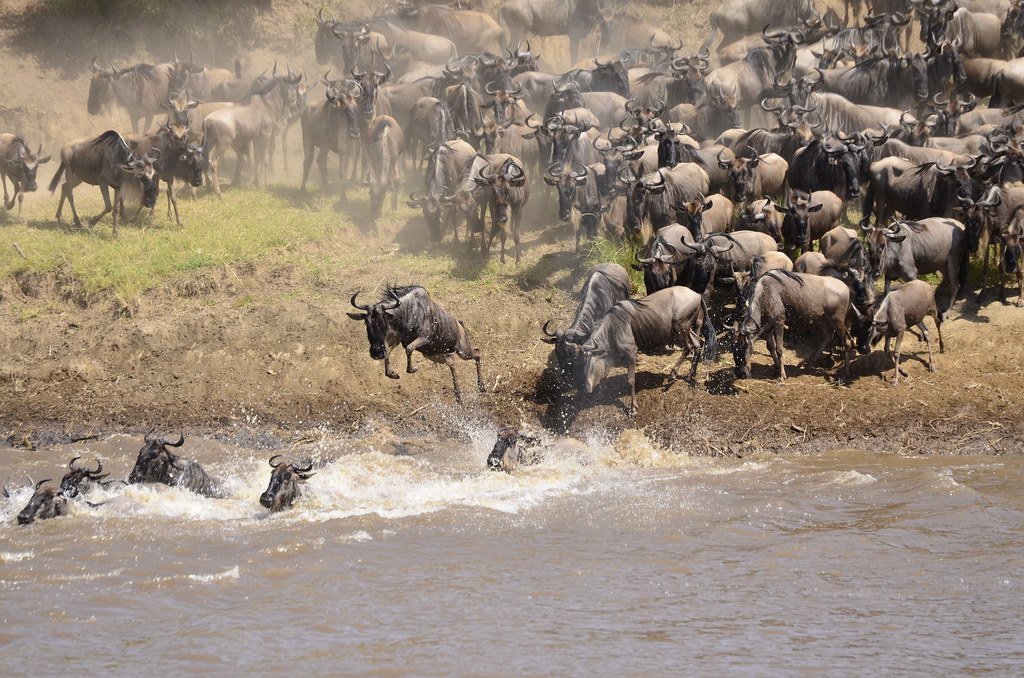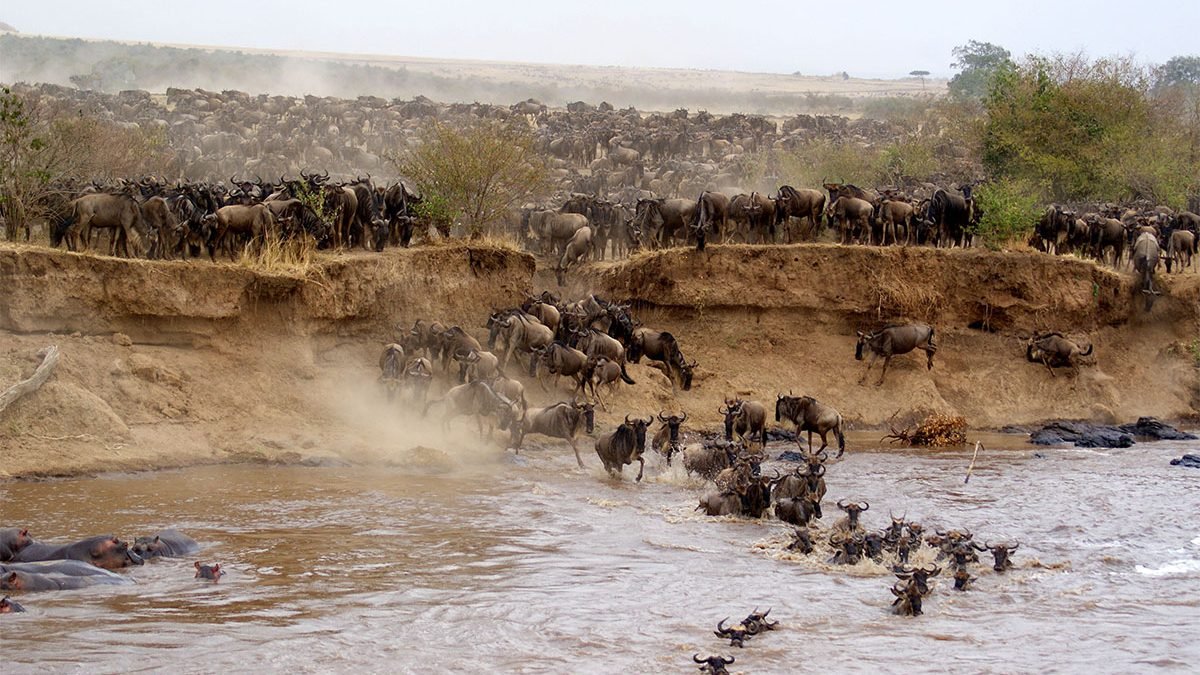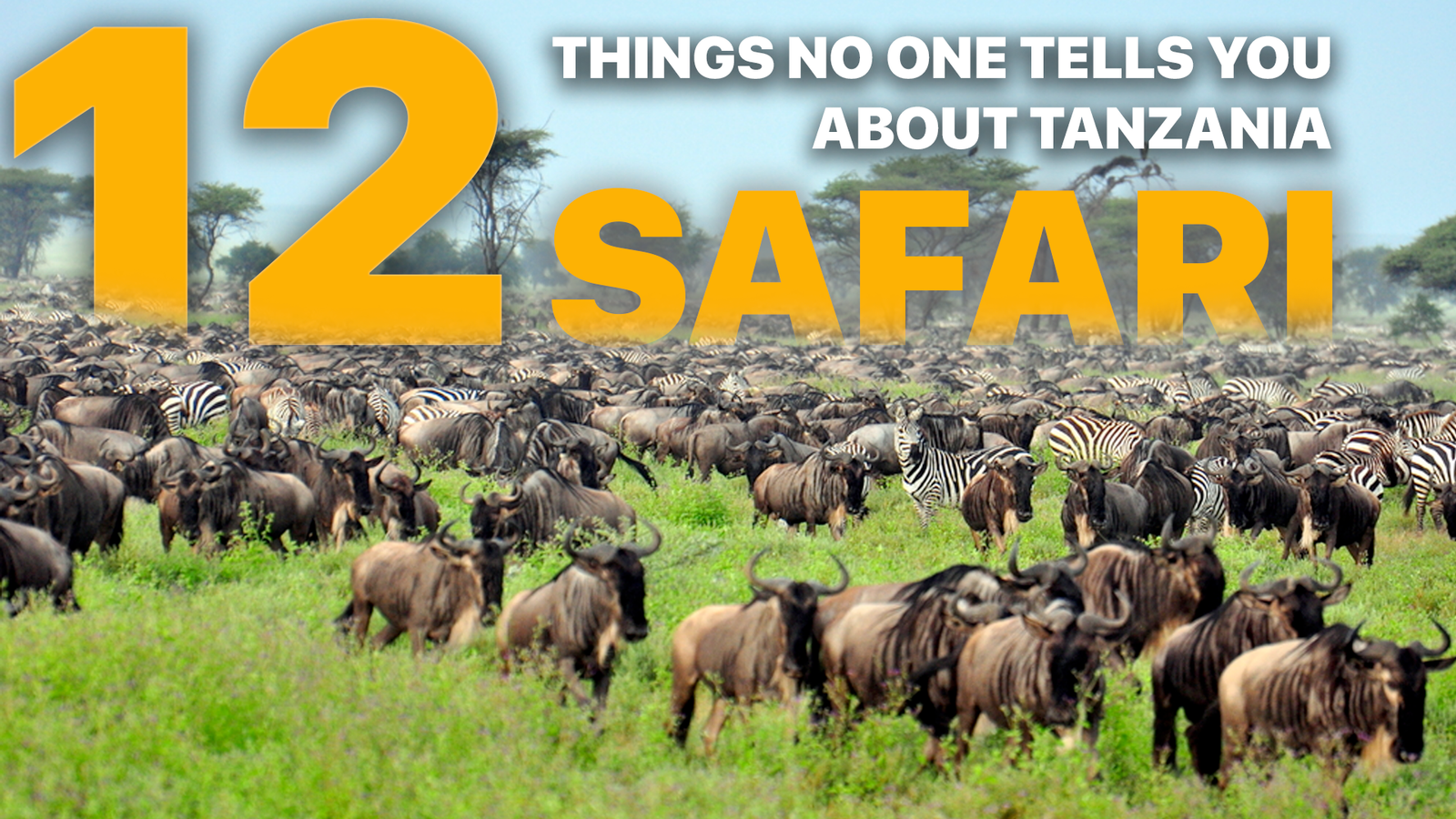Tanzania Serengeti Great Wildebeest Migration – All you need to know
Tanzania’s Great Migration in Serengeti is the largest annual movement of large numbers of wildebeests, Grant’s Zebras, Thomson’s gazelle, elands and the impala. Over two million wildebeests, zebras and gazelles move through the Serengeti and Masaai Mara ecosystems in search of green pastures and fresh water in a nearly regular pattern. These wildebeests move in large numbers throughout the year from the Serengeti in Tanzania to Masaai Mara Game Reserve in Kenya.
Wildebeest crossing the Mara River

Wildebeests traverse through a large ecosystem that includes Tanzania’s Serengeti and Kenya’s Masaai Mara. During their movement, features like the Grumeti and Mara rivers, Simiti, and Lobo hills hinder their smooth movement but they always maneuver around and go through them.
Wildebeests are usually in Tanzania for the time of the year. For about 10 months, they are in Tanzania and spend the other three months in Kenya. Therefore when choosing where to see the wildebeest, beware of when to choose a Tanzania safari or Kenya safari respectively.
Why does the Great Migration occur?
The Great Migration is influenced by seasonal rains and the availability of grazing grass.
Best time/season for the Great Migration in Tanzania
The Great Migration happens all year round and has specific locations for the different times of the year. Travelers can therefore decide to visit during the best time for Tanzania Wildlife Safaris or when they are interested in a specific occurrence.

Where the migration tends to be during the different times of the year;
January, February, and March
Around the start of the year, the animals are finishing the southward trek moving from Serengeti to Ngoro Ngoro with lush green grass. This period is also known as the birthing season (over 5000 calves are born every day) and the conditions are good for raising newborns. During this period, there were several predator encounters since the newborns are seen as targets.
April and May
Around April, large numbers of wildebeests, zebras, antelopes, and gazelles move northwest to central Serengeti and by May, they start to convene at the Moru Kopjes. The end of May is the mating season and this goes on as the movement continues into the Serengeti western corridor. Here herds have to cross the Grumeti River in order to continue with the journey with a threat from the Grumeti river crocodiles.
June and July
June is a dry season and large numbers can be seen in Western Serengeti and the Southern banks of Grumeti River. As of July approaches, they move north towards Mara River, North of Serengeti. Seeing millions of wildebeests, zebras, gazelles, and antelopes crossing the river is the most magnificent sight. The ones that cross the river are seen in Masaai Mara later in July.
August, September, and October
Close to August, the herds are stretched out in the northern part of Masaai Mara after crossing the Mara River. There are no sightings of a single crossing, only a few animals and a mass of animals moving continuously without a break for a while.
By September – October they would have steadily moved eastward.
November and December
In early November and late October, the wildebeests move from Kenya into Eastern Serengeti, and by December, they all over the Eastern and Southern parts. The cycle continues the next year with lush vegetation and rain. When planning to have a wildebeest safari in Tanzania, ensure to be mindful of booking with a tour operator who has expertise in the location of the wildebeests in the season you intend to visit. Tourists flock to Tanzania each year with an interest of watching the wildebeest migration, therefore it is important to book as early as possible. Tanzania is a great wildlife safari destination and good for other safaris. Some of the prominent wildlife parks in Tanzania include Serengeti National Park where you can see the wildebeests, Ngorongoro crater, Lake Manyara National Park, Tarangire National Park, and Ruaha National Park, Selous Game Reserve and the popular beaches for relaxation.
After enjoying a great wildlife experience in Tanzania, East Africa offers other unique experiences such as gorilla trekking. Tailor in a short gorilla trekking safari in Uganda or Rwanda gorilla tour and have an encounter with the great mountain gorillas in their natural habitats. For gorilla safaris, there are no migrations but short movements through the tropical jungle. Charter flights can be organized to connect the Tanzania tour to either Uganda or Rwanda in the shortest time possible for such memorable lifetime experiences.




